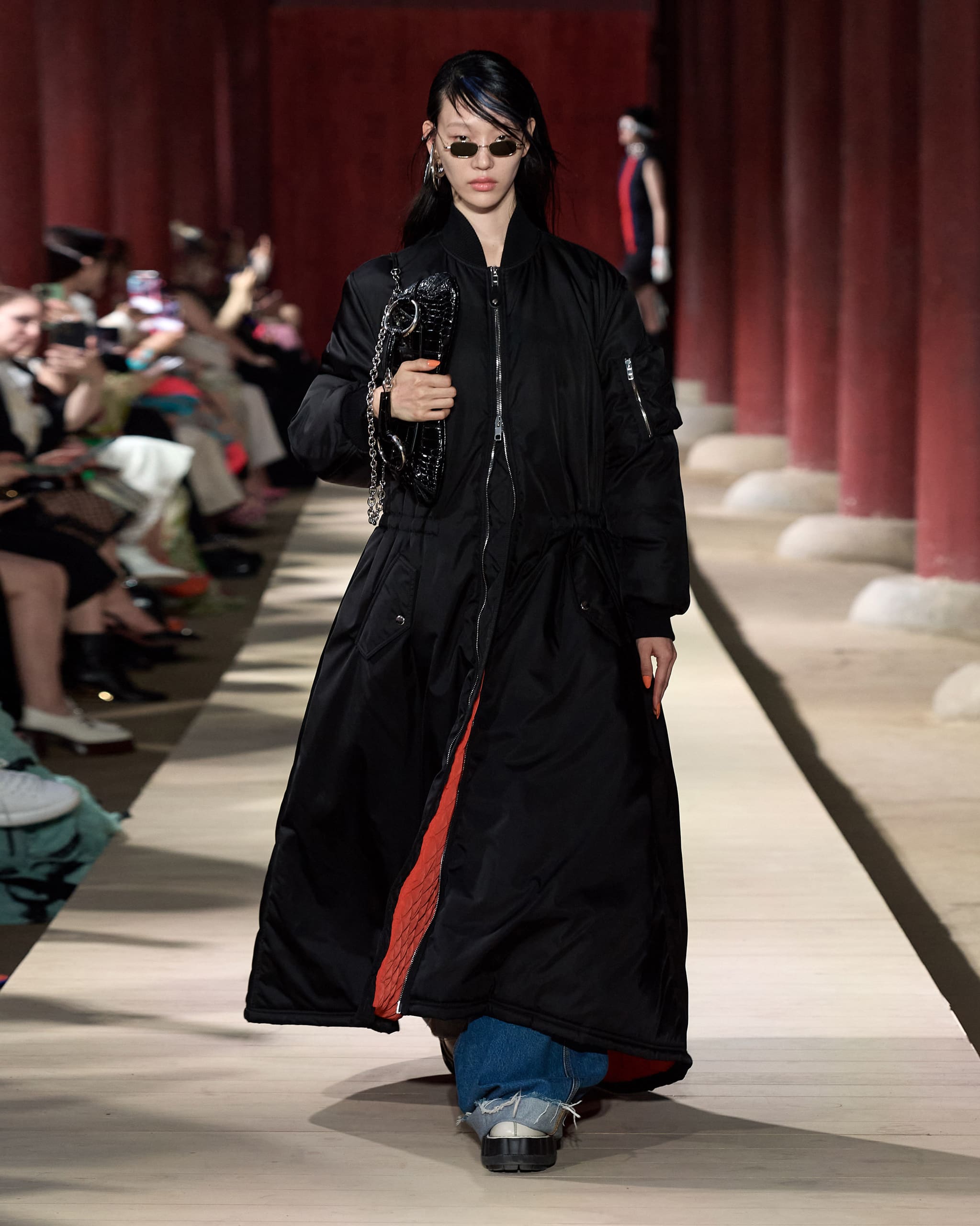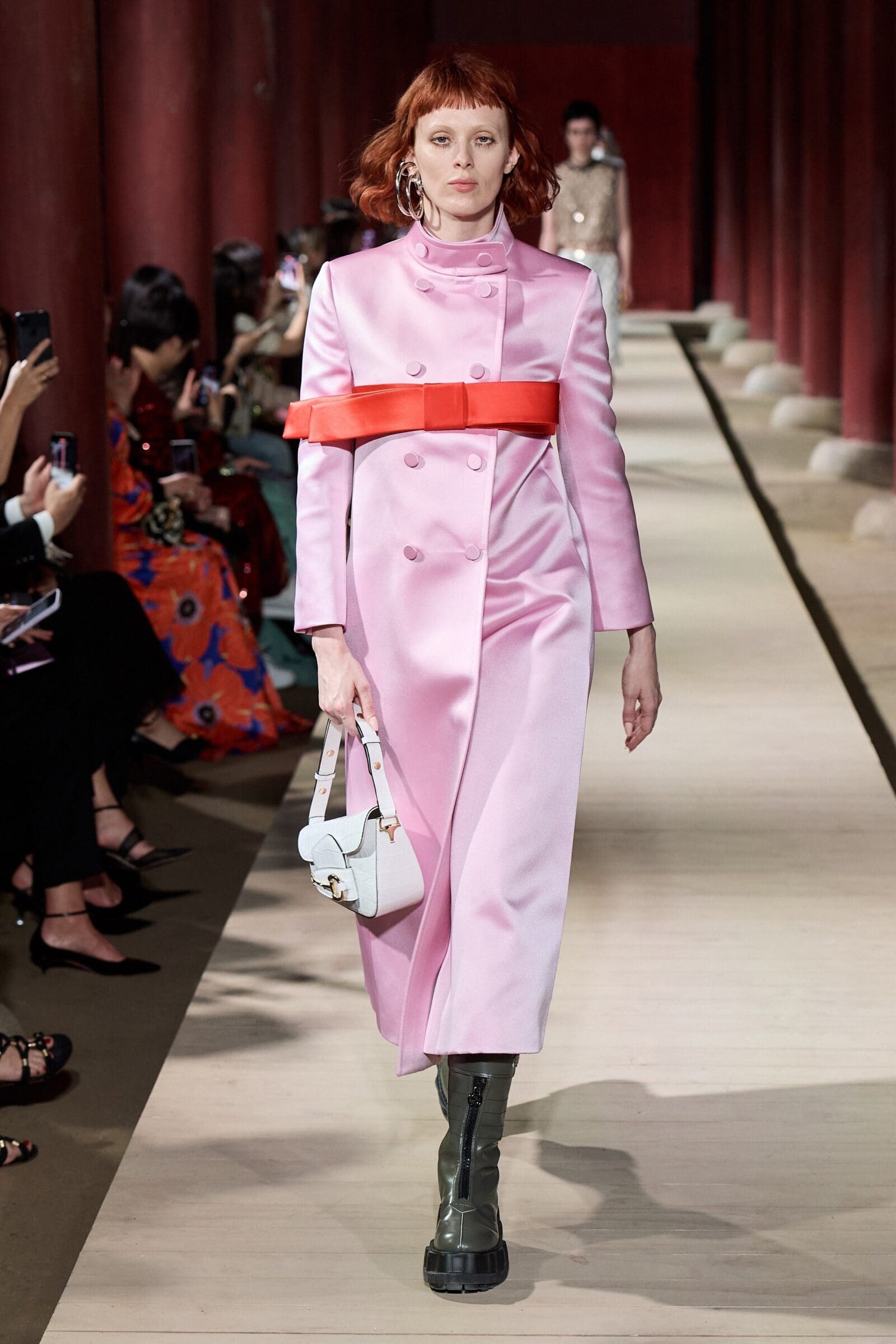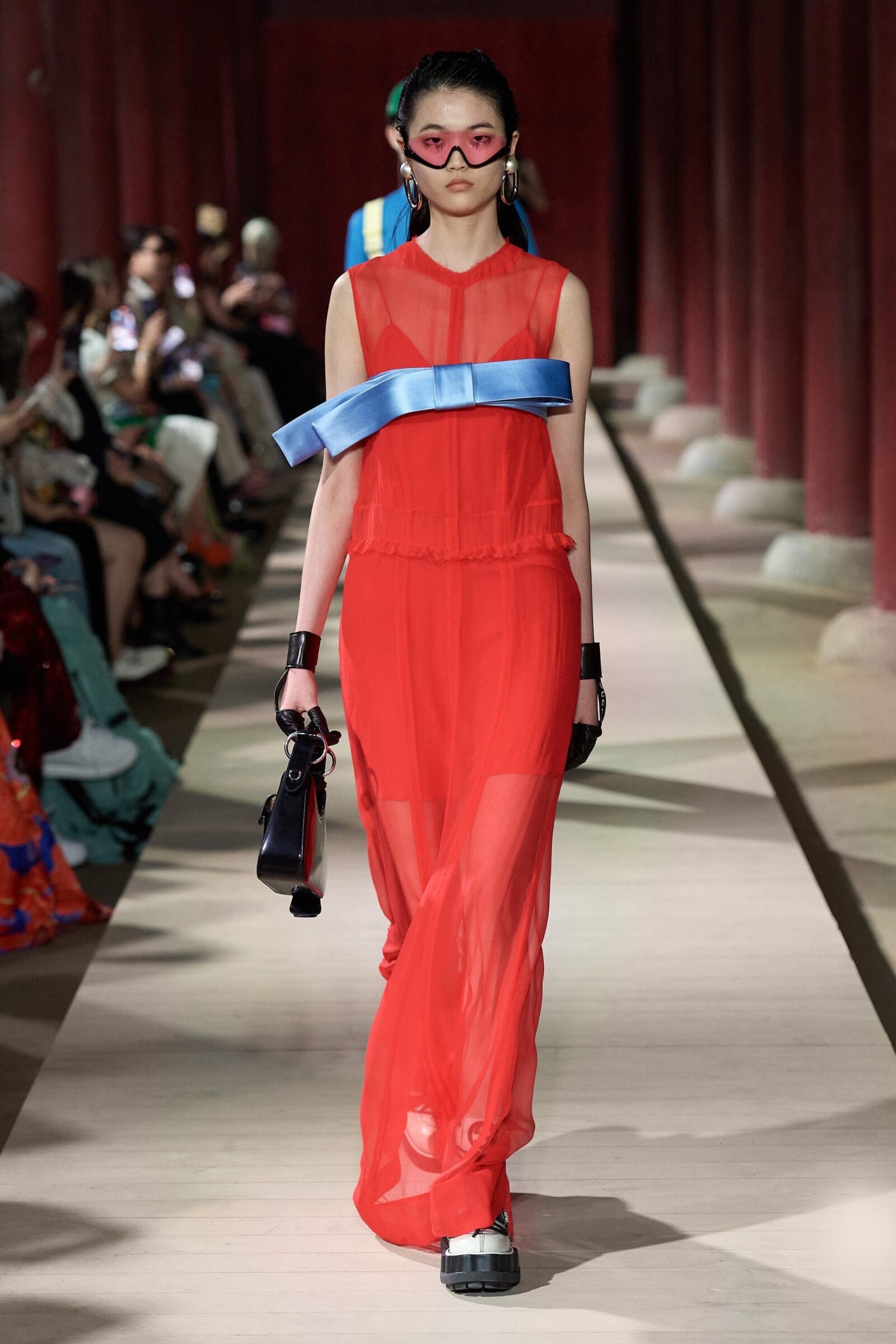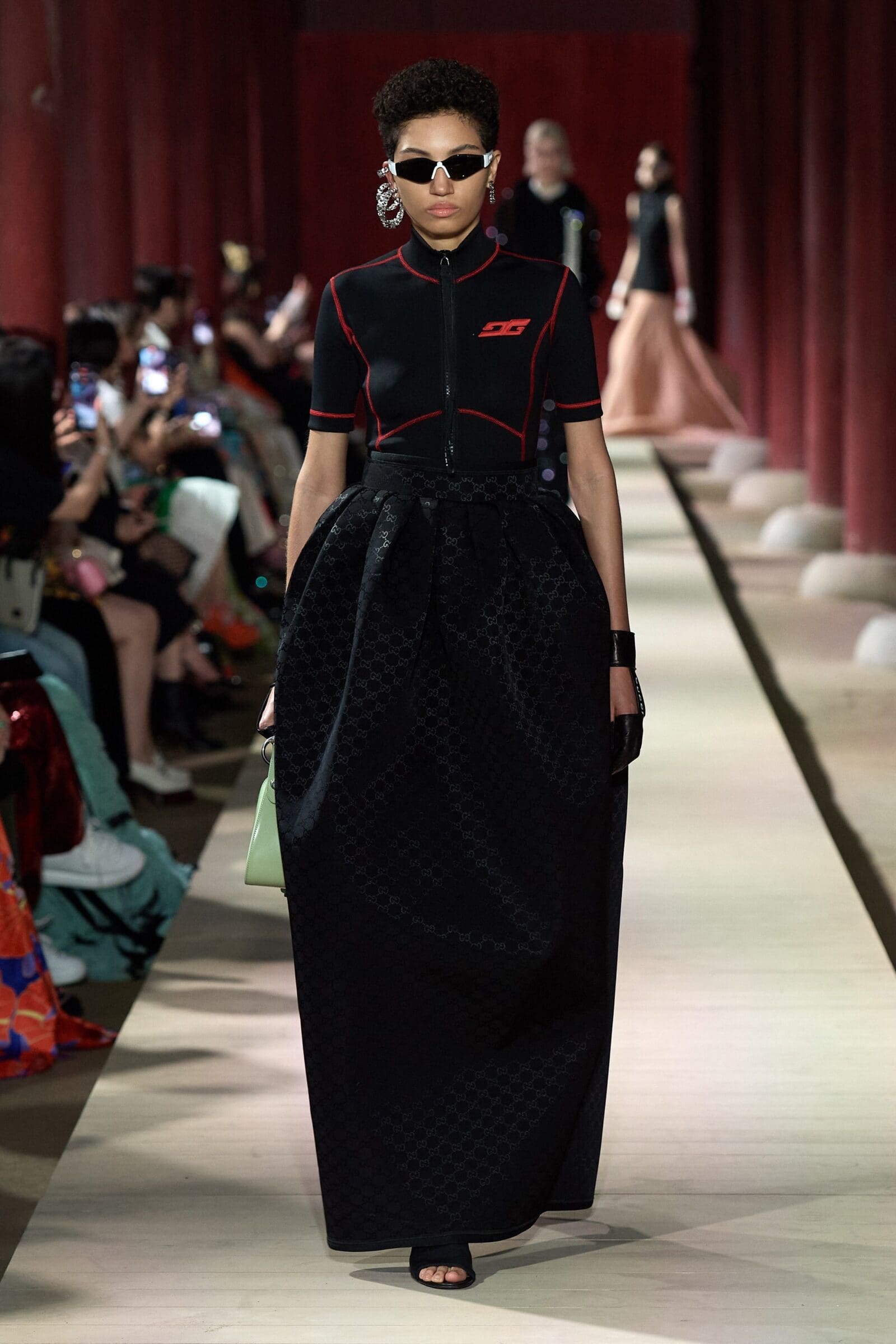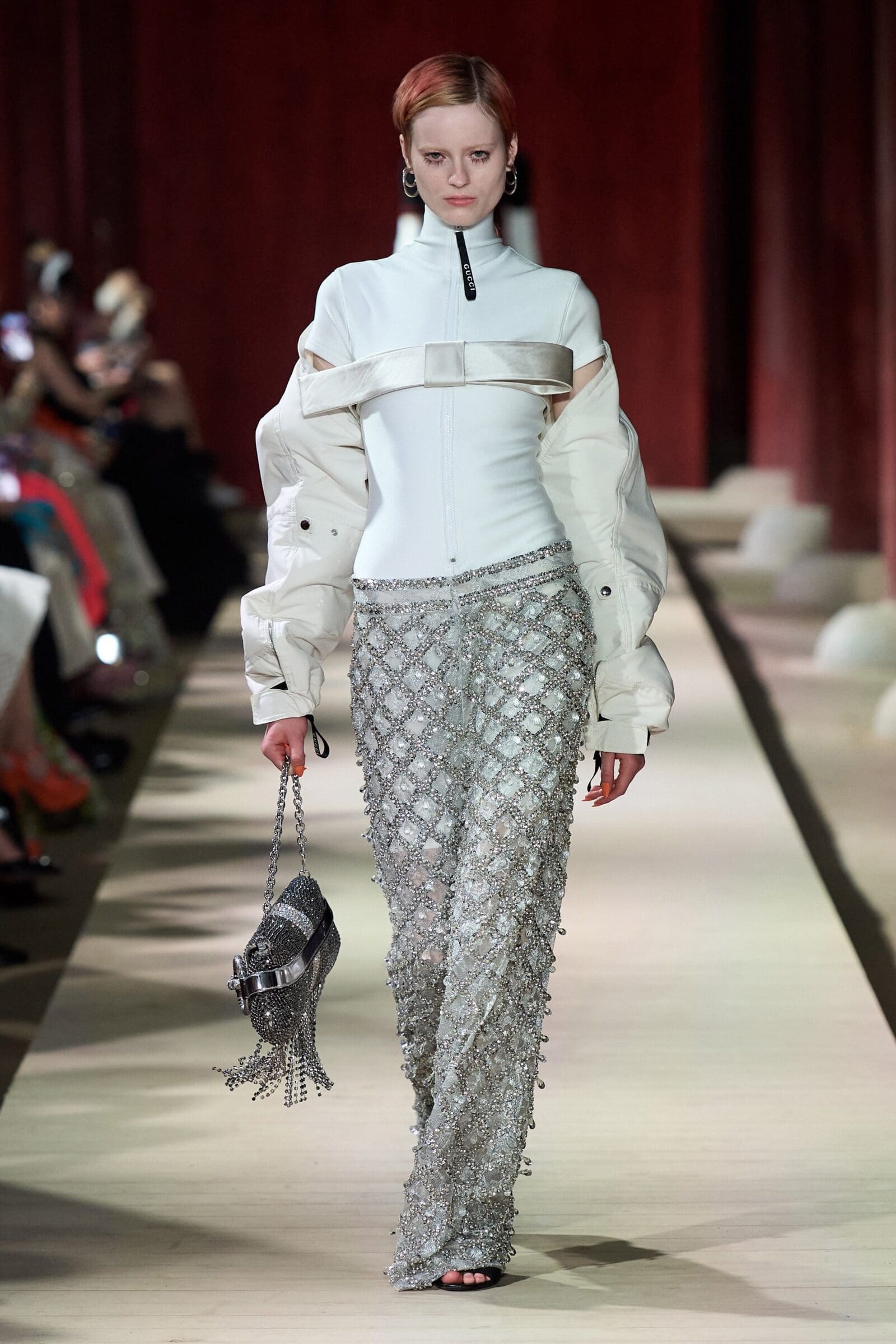The brand’s studio team delivered a spectacle in Seoul that celebrated hybrid global fashion with a stellar cast that included the likes of Kai, Sora Choi, and Karen Elson.
At Gucci’s cruise 2024 show in Seoul, the brand’s studio team delivered a spectacle that celebrated hybrid global fashion with a stellar cast that included the likes of Kai, Sora Choi, and Karen Elson. Below, Anders Christian Madsen reports five key takeaways from the show.
-
The show took place at Gyeongbokgung Palace
On Tuesday evening in Seoul, Gucci became the first-ever brand to present a fashion show within the grounds of the Gyeongbokgung Palace. Originally built in the 14th century, the vast compound – a kind of Versailles of the Far East – was home to the kings of the Joseon dynasty. Today, after centuries of bombings, the buildings are reconstructed but the ceremonial courtyard where Gucci staged its cruise 2024 show looks the same as it did six centuries ago. Seeing the illustrious cast march around it – Kai, Sora Choi, Karen Elson, SeungChan Lee, Hanne Gaby, Tasha Tilberg, Taemin Park – was regal pageantry through another lens: a hypnotising clash of eras and cultures through the global-minded gaze of Gucci, and a majestic tribute to the international impact of contemporary South Korean style, music and art.
-
It was a time-transcending parade
Huge spotlights illuminated the towering pagodas of Gyeongbokgung. A breeze cut through the hot summer evening. Every tile of the panoramic palace courtyard lit up with tiny lights as models paraded through the magenta cloisters – the pagodas’ hand-painted green, blue and red ceilings hovering celestially over their heads – carrying skateboards and surfboards as if they were ceremonies shields. The soundtrack featured music by the South Korean composer Jung Jae-il, who scored the likes of Okja, Parasite and Squid Game: shining examples of the current global propagation of South Korean film and TV, which have made international audiences well-versed in the traits and idiosyncrasies of South Korean mentality.
-
The collection was based on global city dressing
Earlier this year, the Italian designer Sabato de Sarno – who comes from Valentino – was confirmed as the new creative director of Gucci. His debut collection will show in September. Like the last women’s and men’s ready-to-wear collections, the cruise proposal was designed by the Gucci studio. The team approached their destination show through the eyes of the global fashion community of the digital age, asking the question: what binds the contemporary city wardrobe together across continents and cultures? Inspired by the street style of Seoul, they presented a multicultural cosmopolitan look spliced from a wealth of genres, cultures and subcultures, culminating in a magnetic, sassy, sexy aesthetic that transcended geography.
-
Everything was a hybrid
With Tom Ford’s sensual 1990s sophistication for Gucci as its foundation – but invigorated by the colour language associated with Alessandro Michele – the collection explored an array of hybridisations both in garments and styling. Taking inspiration from the water-sports culture of Seoul where windsurfers frequent the enormous Han River, the Gucci studio morphed elements of wetsuits with contrasting garment types like Parisian bourgeois bouclé suits, heritage tailoring and floor-sweeping sculptural eveningwear. It was an exercise in morphing that birthed a look evocative of clubwear and youth-driven subcultures, but which was elevated by the architectonic lines of ceremonial costume, backed up by the stunning surroundings of the Gyeongbokgung Palace.
-
It was all about the graphic value
Images of sticky, shiny puddings and jellies glazed the surfaces of hoodies and dresses. They were part of a collaboration with the South Korean artist Ram Han, whose hyper-graphic biomorphic depictions of everyday things entered into a conversation with the collection’s electrified study of everyday city uniforms. The in-your-face effect of her artworks went hand-in-hand with accessories that were exaggerated in shape and decoration, from February’s trapezoid Chain bag – now imagined in rainbow colours – to Horsebit bags surreally skewed in form and adorned in jewels. And, of course, the triumphant return of Tom Ford’s scuba bags from Gucci’s 1990s archives. The heightened sense of form and colour reached a zenith in magnified takes on the Gucci Web – the house’s trademark green and red stripe – emblazoned across accessories and entire looks.
